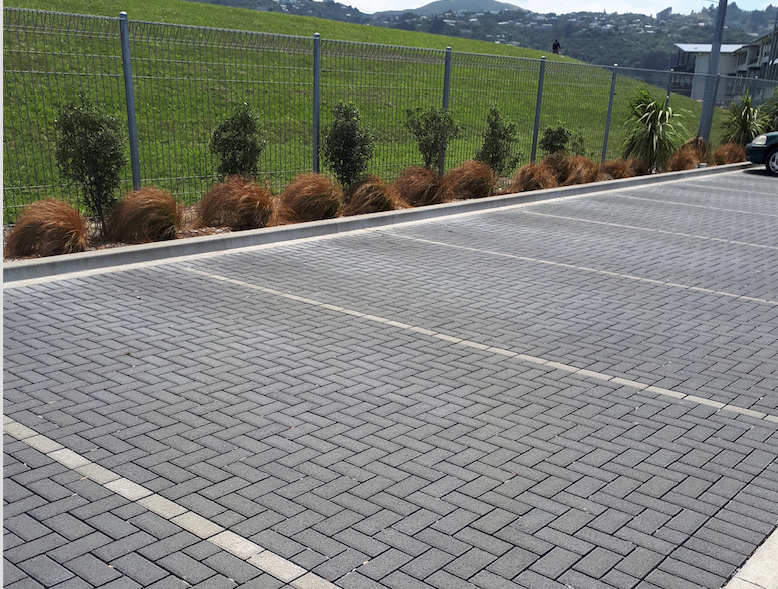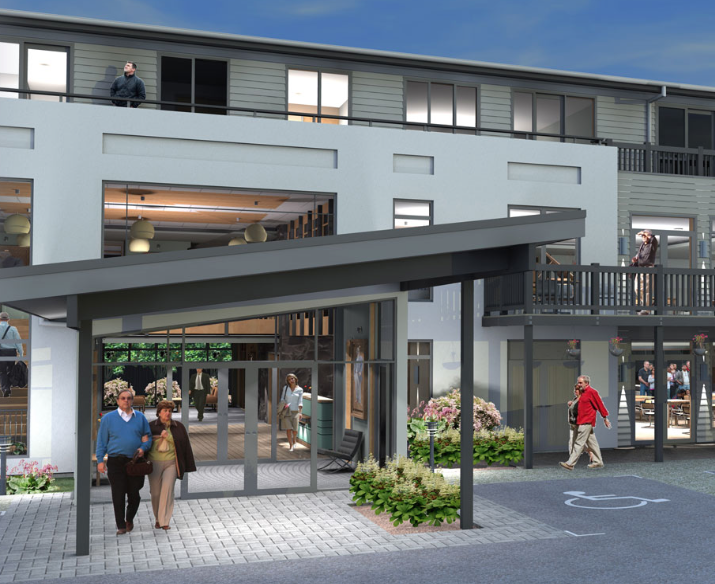
Building a sustainable future is a philosophy that has been around for decades and, with more focus being directed at our environment, green building practices are now being adopted far more frequently for residential and commercial construction.
In addition to requirements for building structures, green building also demands a focus on the hard surfaces used to complete residential and commercial projects. With Councils looking to the future and the ability of their city’s infrastructure to deal with higher density there is a growing awareness of Sustainable Urban Drainage Systems (SuDS). So, to help educate the industry, the NZ Concrete Masonry Association (NZCMA) and Concrete NZ organised two very successful seminars late last year on the subject.
What are SuDS?
In natural environments, rain falls on permeable surfaces and soaks into the ground. In urban areas where many surfaces are sealed by buildings and paving, natural infiltration is limited. Instead, drainage networks consisting of pipes and culverts divert surface water to local watercourses. In some cases this has resulted in downstream flooding and deterioration in river water quality caused when sewers are overwhelmed by surface water which can lead to the release of dirty water into rivers. Sustainable drainage systems aim to alleviate these problems by storing or re-using surface water at source, by decreasing flow rates to watercourses and by improving water quality.
Held in Auckland and Christchurch in October, the seminars brought together expertise from the United Kingdom, Canada and New Zealand to cover landscape architecture, urban and environmental planning, and the engineering design and construction of drainage systems. Bob Bray, a SuDS designer and landscape architect from the UK, outlined successful permeable paving design examples, while David Hein, a civil engineer from Canada focused on the testing of permeable paving and the Interlocking Concrete Pavement Institute (ICPI ) design software.
The international speakers were joined by Nick Vigar, from Auckland Council, who talked about permeable paving in relation to the Unitary Plan, and Sam Blackbourne, a civil engineer with Civix Ltd, who looked at permeable paving design examples from around Auckland.
Convenor of the Concrete NZ Masonry Sector Group David Barnard believes that the strong level of interest shown in the seminars demonstrates that landscape architects, architects, engineers, urban planners and paving contractors are looking to alternative methods for controlling surface water.
“As urban development increases, so too does the potential for flooding from surface water and overloaded drainage systems,” says David. “SuDS and concrete based systems such as permeable paving now offer a way to manage surface water through attenuation and filtration akin to natural drainage prior to site development.”
“Decision makers involved in urban planning, design and construction across New Zealand should look seriously at SuDs as a step change in the holistic management of surface water that will ensure a more sustainable built environment for our towns and cities.”
Information on SuDS applications is currently available from the Interpave (UK) website.
Information about the seminars, including videos of the presentations and links to the featured software, can be found on the NZCMA website or the Concrete NZ website.
An example of Firth’s FlowPave in use at the Masonic Village in Wellington.
